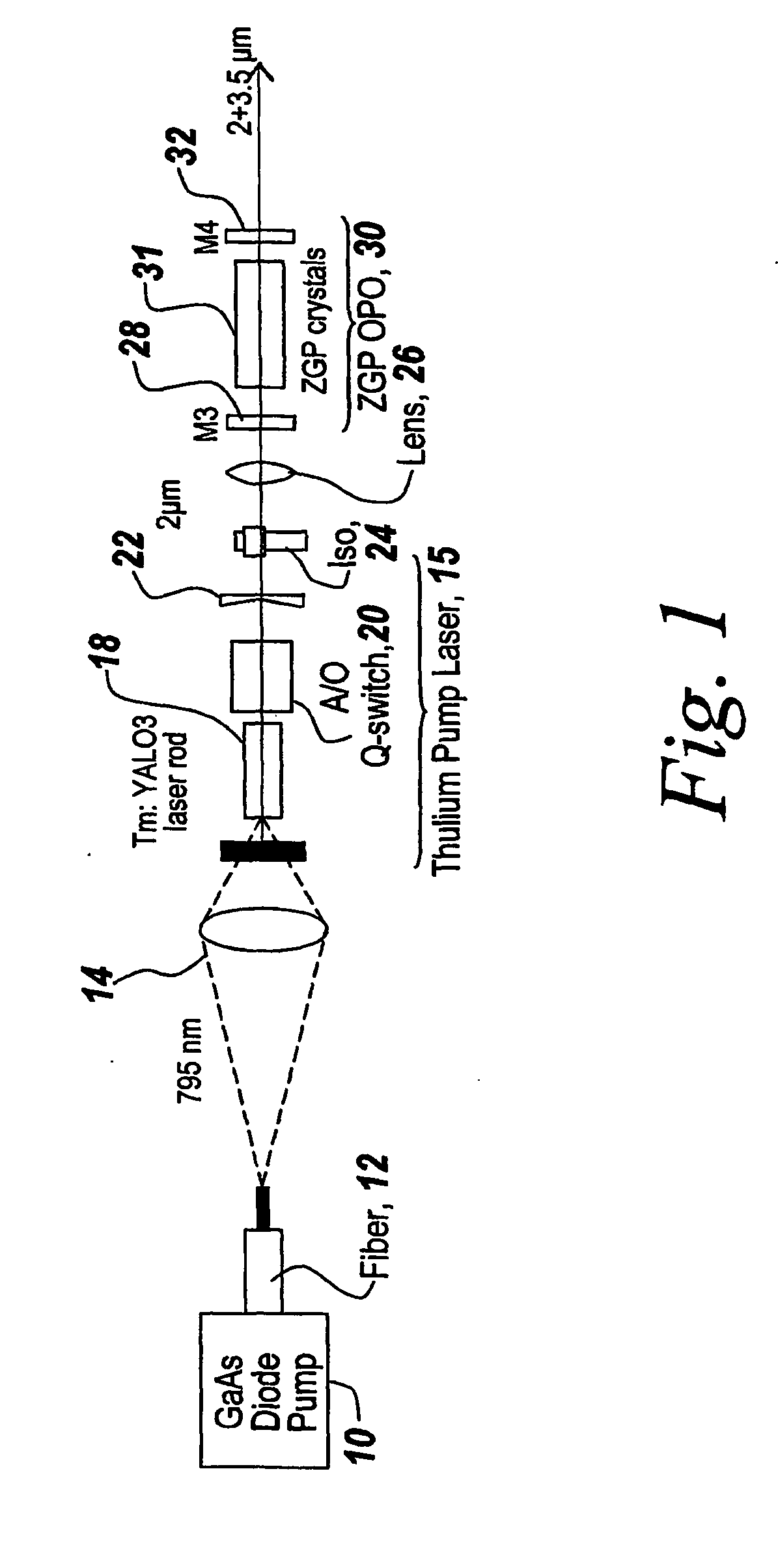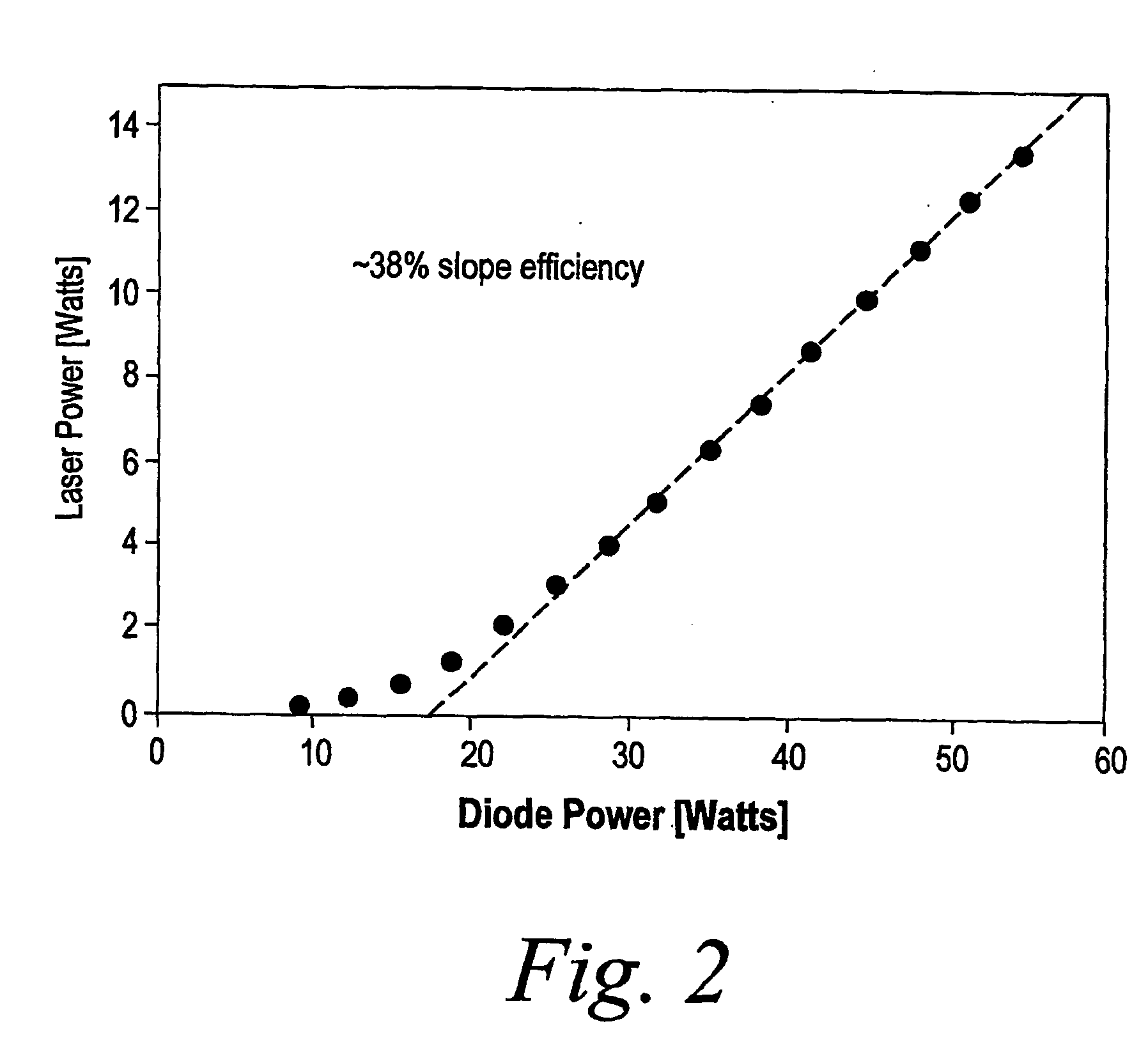Thulium laser pumped mid-ir source with broadbanded output
a technology of pumped mid-ir and laser, applied in the field of lasers, can solve problems such as reducing input power, and achieve the effects of reducing the cross-section of stimulated emission, reducing gain, and prolonging the width of q-switched pulses
- Summary
- Abstract
- Description
- Claims
- Application Information
AI Technical Summary
Benefits of technology
Problems solved by technology
Method used
Image
Examples
Embodiment Construction
[0020] Referring now to FIG. 1, GaAs diodes provide a pump 10 coupled through a fiber 12 that is focused by a lens set 14 into a Thulium pump laser 15. Laser 15 includes an input mirror 16 and a Tm:YAlO3 laser rod 18 followed by an acousto-optical modulator or Q-switch 20 and an output mirror 22.
[0021] The output of Thulium laser pump 15 is coupled through an isolator 24 and a lens system 26 into a zinc germanium phosphide optical parametric oscillator 30. This optical parametric oscillator includes an input mirror 28, one or more ZGP crystals 31, and an output mirror 32.
[0022] Pump 10 outputs 795 nanometer pump pulses which are injected into laser rod 18. The output from mirror 22 is a 2 micron beam which is used to pump OPO 30. Specifically, the output from mirror 22 is 1.99 microns.
[0023] The net result is a broadband spectrum at 2 microns and 3-5 microns. This broadband result in the mid infrared is accomplished with a simple Q-switched Thulium laser which avoids the problems...
PUM
 Login to View More
Login to View More Abstract
Description
Claims
Application Information
 Login to View More
Login to View More - R&D
- Intellectual Property
- Life Sciences
- Materials
- Tech Scout
- Unparalleled Data Quality
- Higher Quality Content
- 60% Fewer Hallucinations
Browse by: Latest US Patents, China's latest patents, Technical Efficacy Thesaurus, Application Domain, Technology Topic, Popular Technical Reports.
© 2025 PatSnap. All rights reserved.Legal|Privacy policy|Modern Slavery Act Transparency Statement|Sitemap|About US| Contact US: help@patsnap.com



